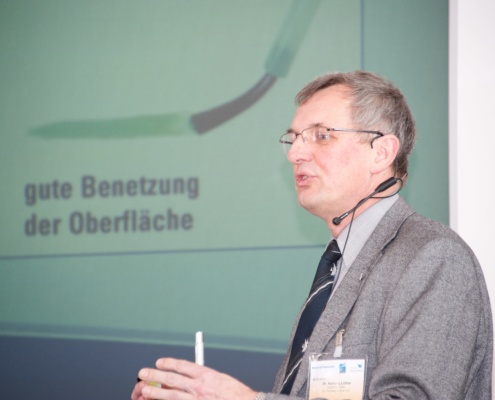Looking back on more than thirty years of “adhesive bonding” I can say that a lot has happened in this time. Initially, the focus was clearly on the development of the technology as such: not only new adhesive technologies were developed, but also the existing ones were further developed and improved. The realization that high-quality bonds also require qualified personnel, but that the bonding knowledge acquired in kindergarten and the first years of school is not sufficient, has taken some time with some users. Even if it was not the rule, it happened that workers from other areas were shifted to the “gluing shop” because of a “lack of performance”.
Thus, errors occurred not only in the execution of bonds, but also in the planning of new and the optimization of existing bonding processes, mostly due to a lack of knowledge, and the effects of supposed optimizations on the bond were not taken into account. The fact that this was not exactly beneficial to quality is no longer surprising today, since bonding is a so-called “special process”, i.e. the quality of a bond cannot be completely tested non-destructively. Thus, error prevention plays a decisive role. However, errors can only be detected and avoided if the personnel is suitably qualified. For more than 10 years, the adhesive bonding qualification required for the respective task and area of responsibility has been determined by the DIN 6701 series of standards for bonds on rail vehicles intended for use in Germany, and since March 2016 by DIN 2304-1 also for all other bonds with the main function of load transfer.
My training courses for adhesive bonding should not be seen as a competition to the established adhesive bonding training courses of the DVS PersZert® to become an adhesive bonding bonder (EAB), an adhesive bonding specialist (ESA) and an adhesive bonding engineer (EAE). However, these courses cannot cover the entire spectrum of bonding technology, or they are too detailed for people who are only indirectly involved in bonding.
With individually oriented advanced training courses, which are specially tailored to the (respective) user company as well as the relevant bonding process and the adhesive used for it, I primarily address companies whose bonding processes are insufficiently covered by the aforementioned advanced training courses of DVS-PersZert®. Depending on the level of education of the participants, the knowledge about the basics of adhesive technology will be refreshed, imparted or extended, as well as the relevant topics for the respective process – starting with the adhesive used, its processing and application, via the parts to be joined and their surface treatment, up to the process steps upstream and downstream of the actual bonding process – will be covered.
I also offer training courses for employees who are only indirectly involved in the bonding process chain (e.g. purchasing, warehouse, logistics, and production) in order to make them aware of quality-relevant bonding details and thus prevent quality problems.
I am also happy to support companies in the creation of intranet-based training courses or knowledge databases, whereby here again the actual bonding processes in your company are in the foreground.



